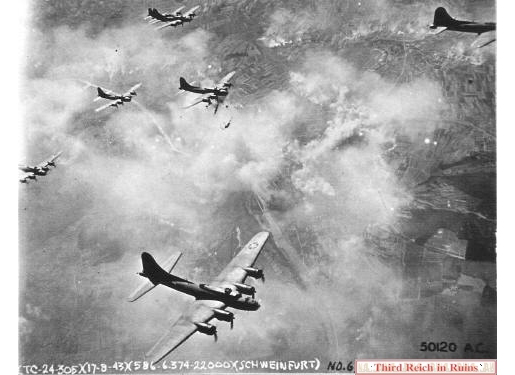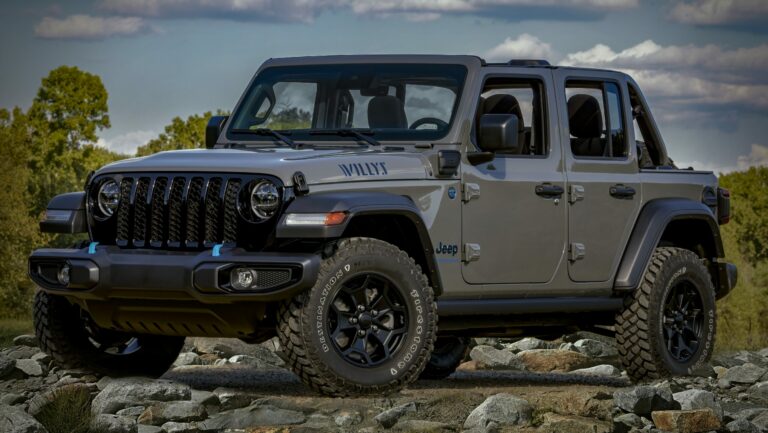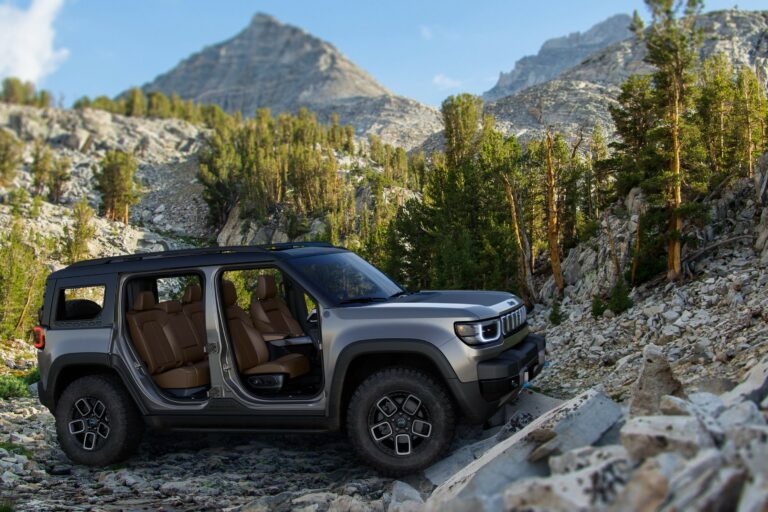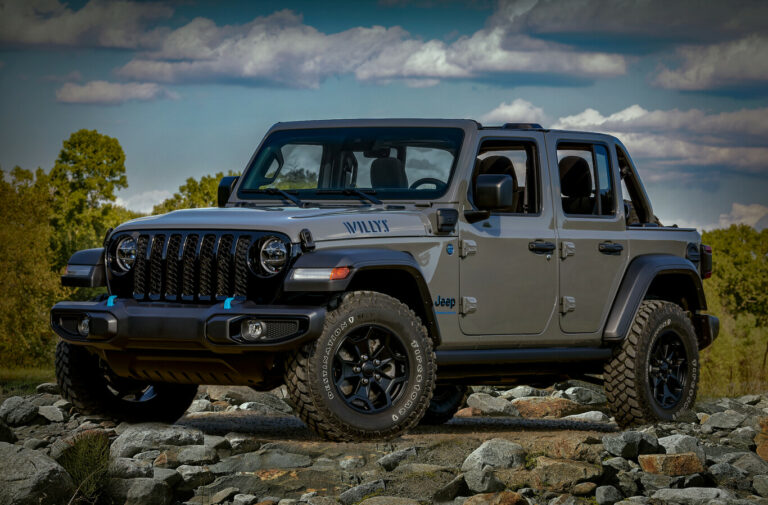1943 Army Jeep For Sale: Owning a Piece of WWII History
1943 Army Jeep For Sale: Owning a Piece of WWII History jeeps.truckstrend.com
In the annals of military history, few vehicles command as much respect and affection as the Willys MB and Ford GPW, colloquy known as the "Jeep." Born out of necessity on the eve of World War II, this unassuming yet immensely capable four-wheel-drive vehicle quickly became the indispensable workhorse of Allied forces. General George C. Marshall famously called it "America’s greatest contribution to modern warfare." For collectors, history enthusiasts, and automotive aficionados, the prospect of finding a 1943 Army Jeep For Sale represents more than just a vehicle purchase; it’s an opportunity to own a tangible piece of history, a rugged symbol of innovation, resilience, and the relentless spirit that helped win a global conflict.
The 1943 model year is particularly significant. By this point, the Jeep’s design had matured, incorporating refinements from its early iterations. Production was in full swing, and these vehicles were being deployed to every theater of war, from the beaches of Normandy to the jungles of the Pacific. Finding a 1943 Army Jeep for sale today means navigating a unique market, where authenticity, condition, and provenance are paramount. This comprehensive guide will delve into everything you need to know about acquiring, understanding, and preserving these iconic machines.
1943 Army Jeep For Sale: Owning a Piece of WWII History
Historical Context: The Icon of WWII
The story of the Jeep began in 1940, when the U.S. Army sought a lightweight, reconnaissance vehicle to replace its aging motorcycle and modified Ford Model T fleet. Willys-Overland, American Bantam Car Company, and Ford Motor Company all submitted prototypes. While Bantam delivered the first prototype, Willys’ "Quad" (later "MA" and then "MB") proved superior in testing, particularly its "Go-Devil" engine. Due to Willys’ inability to meet the massive production demands, Ford was brought in to produce an identical version, designated the GPW (G = Government, P = 80-inch wheelbase, W = Willys engine design).
By 1943, both Willys and Ford were producing Jeeps at an astonishing rate. The MB and GPW were nearly identical, save for minor manufacturing differences and the ubiquitous "F" stampings on many Ford components. These vehicles served in countless roles: as troop carriers, reconnaissance vehicles, ambulances, command cars, and even modified for combat with machine guns. Their legendary reliability, versatility, and off-road capability made them invaluable, earning them the affectionate nickname "Jeep" – a term whose origin remains debated but whose association with this vehicle is undeniable. Owning a 1943 model connects you directly to the peak of this wartime production, a testament to American industrial might and ingenuity.
What to Look For: Anatomy of a 1943 Army Jeep
When considering a 1943 Army Jeep For Sale, understanding its unique characteristics and potential pitfalls is crucial. These vehicles are over 80 years old, and their condition can range from derelict barn finds to meticulously restored museum pieces.
Originality vs. Restoration
The first decision for a prospective buyer is whether to seek an "original" vehicle or a restored one. An original Jeep will show wear, patina, and possibly battle scars, but ideally retain all its factory components. A restored Jeep, on the other hand, will have undergone varying degrees of refurbishment, from a cosmetic refresh to a complete nut-and-bolt rebuild. While a fully original, unrestored 1943 Jeep is the holy grail for some collectors, they are exceedingly rare and command premium prices. Most available Jeeps will have some level of restoration or repair.
Key Components to Inspect

- Engine: Both Willys MB and Ford GPW used the Willys "Go-Devil" L-head 4-cylinder engine. Check for matching serial numbers (if possible), signs of leaks, compression, and general running condition. Be wary of modern engine swaps unless explicitly desired.
- Chassis and Frame: The "hat channel" frame is robust but susceptible to rust, especially where dirt and moisture accumulate. Inspect for bends, cracks, and previous repairs. Original body tubs often show stress cracks around mounting points.
- Body: Look for original body stampings, correct tool indents, and the characteristic holes for the deep water fording kit (often plugged or patched if not in use). Rust is common in floor pans, rear corners, and under the seats. Note the presence of the original data plates (on the dashboard and firewall), which confirm the manufacturer and serial numbers.
- Drivetrain: The T-84 transmission and Spicer 18 transfer case are robust but can suffer from wear and tear. Listen for grinding noises, check for proper engagement of all gears, and test the 4×4 system. Axles (Dana 25 front, Dana 27 or 41 rear, depending on model and production batch) should be inspected for leaks and play.
- Electrical System: Originally 6-volt, many Jeeps have been converted to 12-volt for easier starting and modern accessory compatibility. Understand which system is present and ensure it’s functioning correctly.
- Wheels and Tires: Original Jeeps would have "combat wheels" (split rims) and Non-Directional Tread (NDT) tires. Ensure wheels are not bent or cracked, and tires are in good condition.
- Distinguishing Willys MB from Ford GPW: While similar, keen eyes can spot differences. Ford parts often bear an "F" stamping (e.g., on bolts, shock absorbers, pintle hooks, exhaust manifold). Willys parts typically have a "W" or no specific manufacturer mark. Data plates are the definitive identifier.

The Purchase Journey: Practical Advice for Buyers

Acquiring a 1943 Army Jeep is an exciting endeavor that requires careful planning and due diligence.
Setting a Budget
The price of a 1943 Army Jeep can vary wildly, from a few thousand dollars for a non-running project to upwards of $50,000 for a concourse-level restoration with documented history. Factors influencing price include:
- Condition: Running vs. non-running, level of rust, completeness.
- Originality: How many original components are still present.
- Restoration Quality: Professional vs. amateur, attention to detail.
- Provenance: Documented wartime history, original paperwork, previous ownership.
Where to Find One
- Online Marketplaces: Specialized classic car sites (e.g., Hemmings, ClassicCars.com), military vehicle forums, eBay, Facebook Marketplace.
- Specialized Dealers: Reputable dealers focusing on military vehicles often have inventory and expertise.
- Military Vehicle Shows and Swap Meets: Excellent places to see vehicles in person, meet sellers, and find parts.
- Auctions: Can yield good deals but require quick decision-making and often "as-is" sales.
Due Diligence
- Professional Inspection: If possible, hire an independent mechanic or, even better, a specialist knowledgeable in WWII military vehicles to inspect the Jeep. They can spot hidden issues and assess the true condition.
- Checking VIN/Serial Numbers: Verify the numbers on the data plates match the title (if one exists). Research the numbers to confirm the year and manufacturer.
- Test Drive: If running, test drive the vehicle. Pay attention to engine noise, transmission shifting, brake effectiveness, and steering play. Remember, these vehicles drive very differently from modern cars.
- Understanding the Seller’s Claims: Be skeptical of claims of "all original" unless backed by extensive documentation and expert verification. Ask for detailed photos and videos.
Legal and Registration
Titling and registering a vintage military vehicle can be complex. Research your state’s specific requirements for antique or historical vehicle registration. Ensure the seller provides a clear title or bill of sale. Some states may require a VIN verification.
Restoration and Maintenance: Keeping the Legend Alive
Owning a 1943 Army Jeep is not just about the purchase; it’s about the ongoing commitment to its preservation.
Full Restoration vs. Sympathetic Preservation
A full restoration aims to bring the vehicle back to its exact factory specifications, often involving complete disassembly, frame-off work, and period-correct paint and markings. Sympathetic preservation, on the other hand, focuses on maintaining the vehicle’s current condition, addressing only critical mechanical issues, and preserving its historical patina. Your approach will depend on your budget, skills, and desired outcome.
Sourcing Parts
Finding parts for an 80-year-old vehicle can be a treasure hunt.
- Reproduction Parts: Many parts are reproduced today, ranging in quality. These are generally more affordable and readily available.
- NOS (New Old Stock): Original parts that were never used. These are highly sought after but increasingly rare and expensive.
- Used Parts: Found at swap meets, online forums, or from parts vehicles.
- Specialized Vendors: Numerous companies specialize in WWII Jeep parts and often offer expert advice.
- Military Vehicle Clubs: A fantastic resource for finding parts, advice, and camaraderie.
Common Maintenance Issues
The "Go-Devil" engine is robust but requires regular maintenance. Common issues include carburetor problems, ignition system wear (points, condenser), cooling system clogs, and brake system leaks. These vehicles predate many modern automotive comforts, so be prepared for manual steering, unassisted brakes, and a generally raw driving experience.
Tools and Resources
Invest in original Technical Manuals (TMs) – these are invaluable for maintenance and repair. Online forums and clubs dedicated to military vehicles are goldmines of information and support.
Challenges and Considerations
While owning a 1943 Army Jeep is incredibly rewarding, it comes with its share of challenges:
- Rust: The biggest enemy. Even a seemingly solid Jeep can hide significant rust issues.
- Availability of Original Parts: Becoming scarcer and more expensive, pushing more owners towards reproduction parts.
- Cost of Restoration: Can easily exceed the initial purchase price, especially for a high-quality job.
- Safety: These vehicles lack modern safety features like seatbelts (often added aftermarket), airbags, and crumple zones. Drive defensively.
- Driving Experience: Expect a slow, noisy, and somewhat difficult driving experience compared to modern vehicles. They are not designed for highway speeds.
Price Guide: Understanding the Market Value of a 1943 Army Jeep
The value of a 1943 Army Jeep is highly dependent on its condition, originality, and completeness. The following table provides a general guide; actual prices can vary based on market demand, location, and seller motivation.
| Condition Category | Description | Estimated Price Range (USD) | Key Factors Affecting Price |
|---|---|---|---|
| Project/Barn Find | Non-running, significant rust, incomplete, missing major components, needs full restoration. May require frame-off work. | $5,000 – $15,000 | Extent of rust, presence of engine/drivetrain, completeness of body, availability of title, Willys MB vs. Ford GPW (Willys often commands slightly more for projects due to perceived rarity). |
| Running Project | Runs and drives, but needs significant mechanical work, rust repair, and cosmetic restoration. May not be roadworthy. | $15,000 – $25,000 | Engine condition, drivetrain functionality, structural integrity of frame, completeness of parts, general mechanical soundness. |
| Driver Quality | Roadworthy, mechanically sound, cosmetically presentable but not perfect. Shows signs of age and use. May have some non-original parts. | $25,000 – $40,000 | Reliability of mechanicals, quality of previous repairs, minor rust vs. no rust, paint quality, functional accessories, whether it’s a Willys MB or Ford GPW (Willys MB often holds a slight edge). |
| Nicely Restored | Professionally or meticulously restored, excellent cosmetic and mechanical condition. Period-correct paint, markings, and most components. May have some reproduction parts. | $40,000 – $65,000 | Quality of restoration (paint, bodywork, mechanicals), attention to historical accuracy, correct markings, functioning accessories, documentation of restoration process, matching numbers (if applicable). |
| Concourse/Museum Quality | Flawlessly restored to original factory specifications with extreme attention to detail and historical accuracy. Often boasts significant original components, documented provenance, and correct wartime modifications. Show-winning condition. | $65,000 – $100,000+ | Authenticity, originality of components (NOS), documented wartime history, perfection of restoration, inclusion of rare period accessories, matching numbers, original data plates and frame stampings, comprehensive historical research, condition of "F" or "W" stampings on components. |
Note: These are estimates and market values can fluctuate. Always perform thorough due diligence.
Conclusion: More Than Just a Vehicle
Owning a 1943 Army Jeep is a profound experience that transcends simple vehicle ownership. It’s an active connection to a pivotal moment in human history, a rolling monument to the bravery and ingenuity of a bygone era. Whether you envision it as a weekend cruiser, a parade participant, or a centerpiece of a military vehicle collection, the Jeep offers an unparalleled sense of nostalgia and pride.
The journey of acquiring and maintaining one of these remarkable machines is a labor of love, demanding patience, research, and often, a willingness to get your hands dirty. But for those who embark on this adventure, the reward is immeasurable: the unique satisfaction of preserving a piece of the past, ensuring that the legend of the "Jeep" continues to inspire generations to come. It’s a commitment to history, a testament to rugged engineering, and an enduring symbol of freedom.
Frequently Asked Questions (FAQ) about 1943 Army Jeeps
Q1: Is a 1943 Army Jeep road legal in the U.S.?
A1: Yes, in most states, a 1943 Army Jeep can be registered as an antique or historical vehicle. However, specific requirements vary by state, so it’s essential to check your local DMV regulations. They lack modern safety features, so always drive with caution.
Q2: What’s the main difference between a Willys MB and a Ford GPW?
A2: For the casual observer, they are nearly identical. The primary difference lies in the manufacturer and subtle stamping marks. Ford GPWs often have an "F" stamped on many components (bolts, small parts, castings), while Willys MBs have "W" or no specific manufacturer mark. Data plates are the definitive way to identify the original manufacturer.
Q3: How much does it cost to restore a 1943 Army Jeep?
A3: Restoration costs vary widely. A basic mechanical refresh might be a few thousand dollars, but a full, professional, historically accurate restoration can easily cost $30,000 to $60,000 or more, often exceeding the purchase price of the vehicle itself. It depends on the starting condition, the level of originality desired, and whether you do the work yourself or hire professionals.
Q4: Can I use a 1943 Army Jeep as a daily driver?
A4: While technically possible, it is highly impractical and not recommended. These vehicles were designed for military use in the 1940s, not for modern highway speeds or daily commuting. They are slow, noisy, lack modern safety features, and require more frequent maintenance than contemporary vehicles. They are best suited for parades, shows, light off-roading, and historical events.
Q5: Where can I find parts for a 1943 Army Jeep?
A5: Parts can be found through specialized military vehicle parts dealers (both online and brick-and-mortar), military vehicle swap meets, online forums, eBay, and through military vehicle collector clubs. Both new reproduction parts and New Old Stock (NOS) original parts are available, though NOS parts are becoming increasingly rare and expensive.
Q6: What kind of fuel economy can I expect from a 1943 Army Jeep?
A6: The 1943 Army Jeep is not known for its fuel efficiency. Depending on conditions, driving style, and mechanical state, you can expect anywhere from 12 to 18 miles per gallon (MPG).
Q7: Are they hard to work on?
A7: Compared to modern vehicles, 1943 Army Jeeps are relatively simple mechanically, with fewer complex electronics. This makes them appealing to hobbyists who enjoy working on their own vehicles. However, they are old, and parts may be seized or rusted, requiring patience and specialized tools. Access to original technical manuals (TMs) is invaluable.






